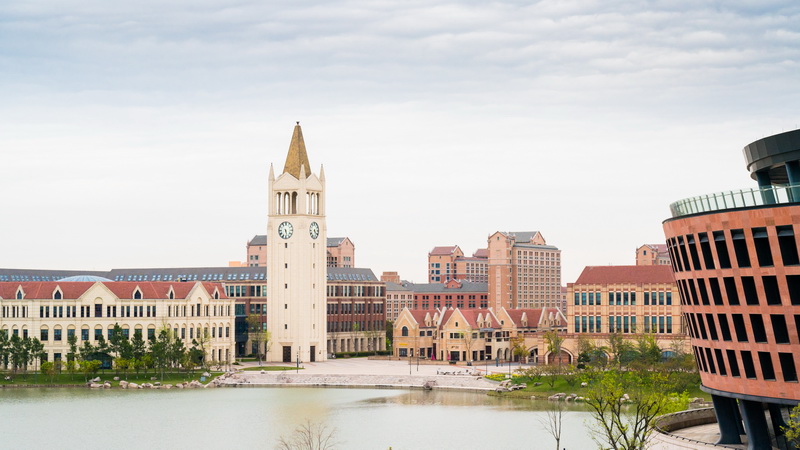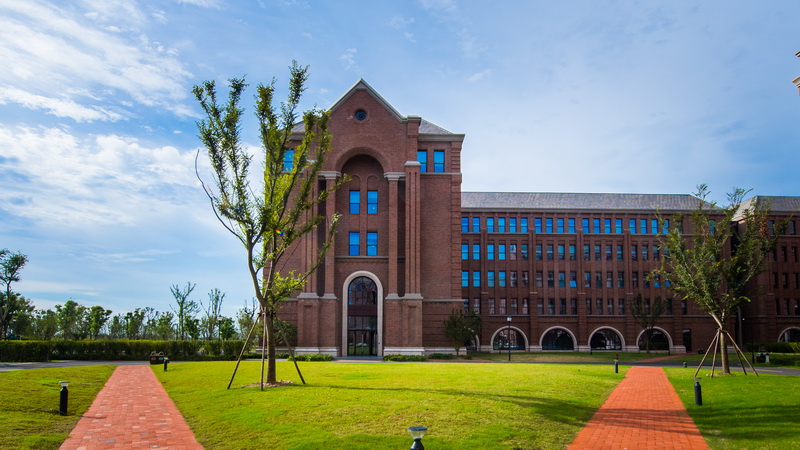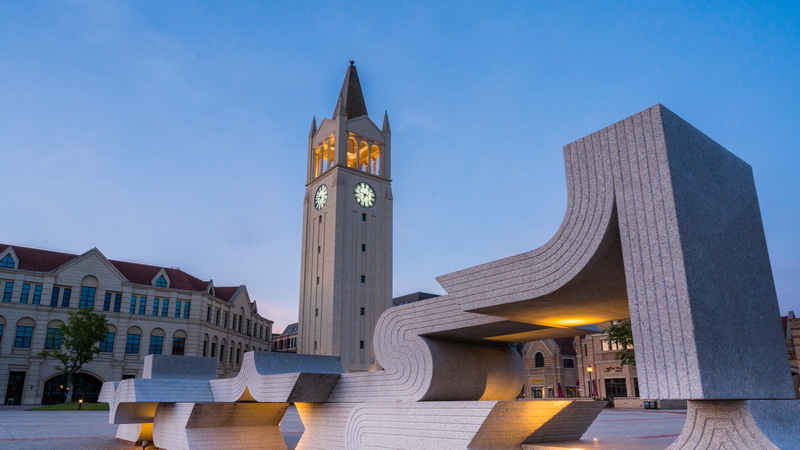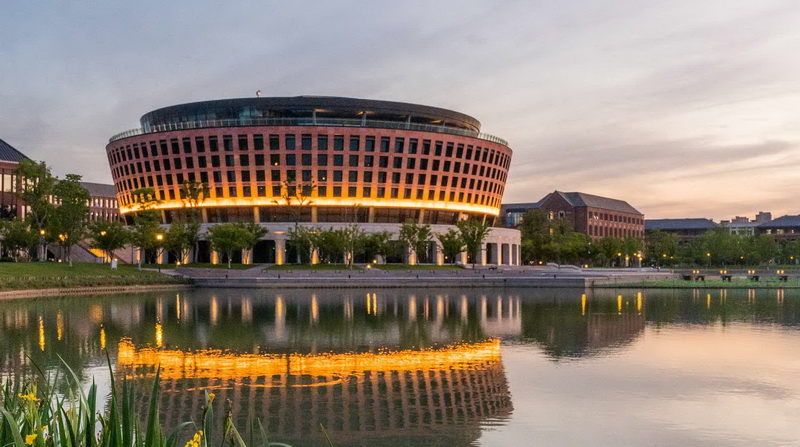In the spring-summer semester of 2025, a new general education course at Zhejiang University's Haining International Campus transformed 10 undergraduates from students to "teachers." Equipped with experimental tools, they stepped onto the podiums of six primary schools in Haining, embarking, along with over 500 elementary students, on a journey of scientific exploration.
The course, titled University Students' Popular Science Education and Practice, is one of the first featured undergraduate teaching reform initiatives at the campus and is included in the second batch of provincial-level teaching reform projects during the 14th Five-Year Plan period.
Led by Professor Li Hanying, the teaching team—including Peng Boyu, Wee-Liat ONG, Liangjing YANG, Timothy LEE—collaborated with the campus's Department of Education to meticulously design the course. The course combines small-class learning; group-based, hands-on practice; and on-site presentations. In the first half of the course, the instructors delivered lectures on their specialized popular science topics while, in the latter half, the students formed teams to conduct science outreach in primary schools.
To ensure effective teaching, the international campus partnered with the Haining Municipal Education Bureau, selecting six primary schools as practice bases: Haining Experimental Primary School, Wang Guowei Primary School, Xiashi Primary School, Juanhu Primary School, Qiantang Experimental Primary School, and Yangshan Primary School.
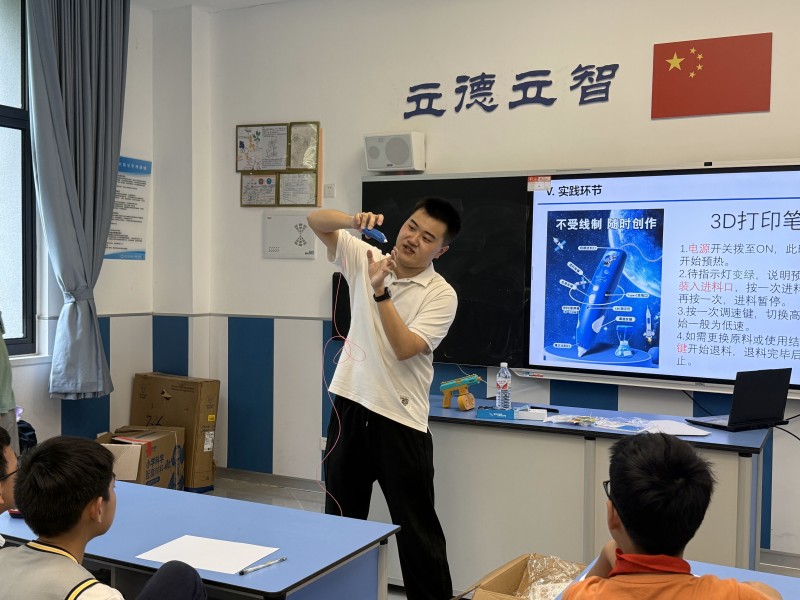
In late April, the students embarked on their primary school outreach as planned. The "young teachers" prepared meticulously for each session, blending theoretical explanations with hands-on activities.
- "Can sound be seen or just heard?" At Juanhu Primary School, Liu Wenting gently guided the children through interactive experiments such as "visualizing tuning fork vibrations," making sound tangible and visible.
- "Light can create a magical world." Qi Hengxing introduced pupils at Xiashi Primary School to photolithography, encouraging them to unleash their creativity and experience the wonders of technology.
- "3D printing can turn imagination into reality quickly." Yu Chenghang taught The Painting That Stands Up at the Experimental Primary School, designing models that left the young scientists eager for more.
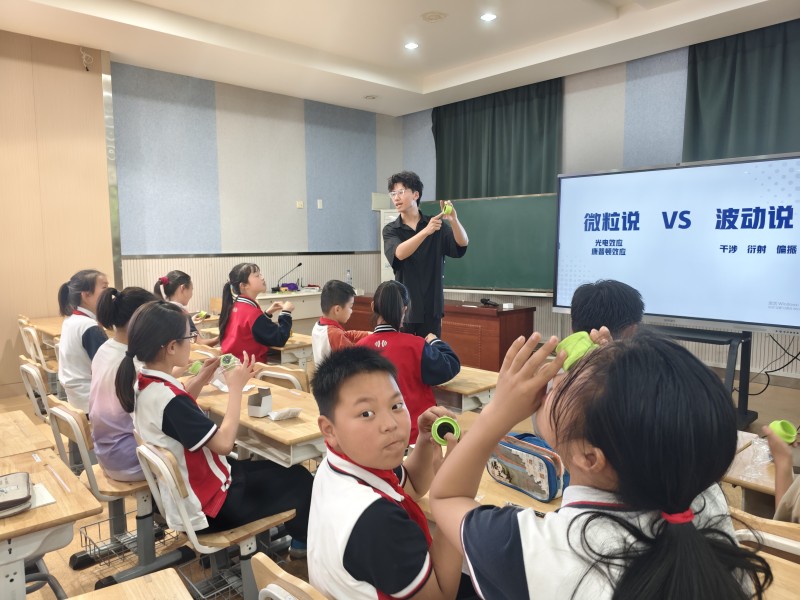
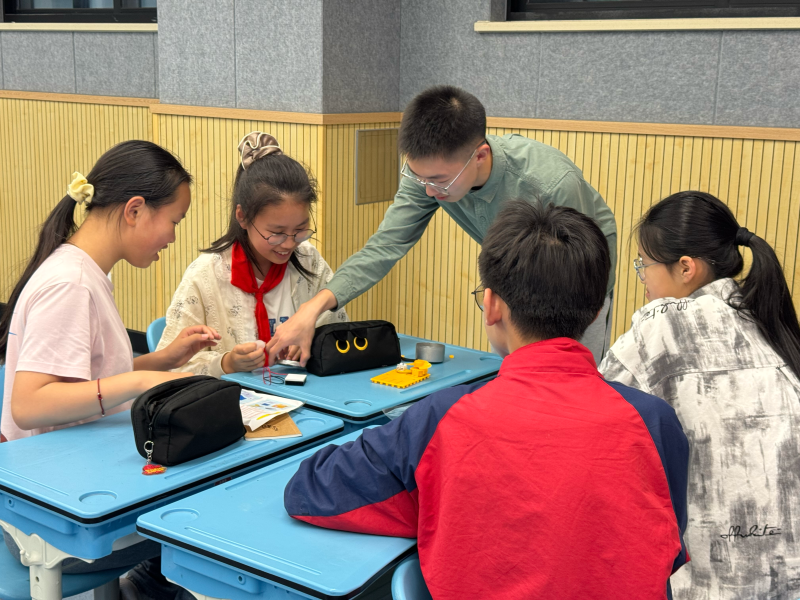
The university students went all out to excel as science communicators. They consulted primary school teachers to understand the children's backgrounds, studied elementary textbooks to tailor their lessons to the students' cognitive levels, and even incorporated popular cartoon elements into their designs to boost engagement. In class, they shared personal experiences, from competing in robotics tournaments to volunteering in rural education programs.
During the final course debrief, the students unanimously agreed that standing on the podium as "teachers" had honed both their skills and their mindsets. They credited the campus's teaching model—which blends knowledge acquisition with practical training—for providing a solid foundation and expressed gratitude for such a "down-to-earth" course.
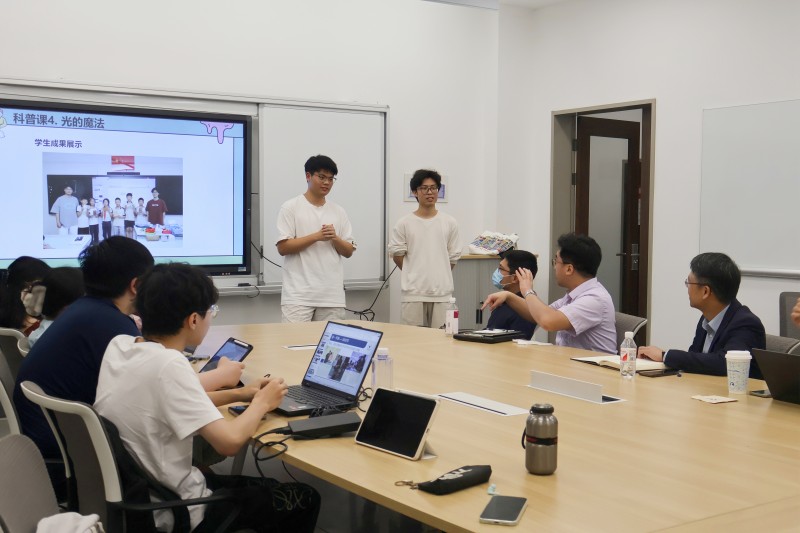
From university professors to undergraduates, and from undergraduates to primary school pupils, a chain of science outreach was formed. Cutting-edge scientific knowledge was sown like seeds in the children's minds, and the look in their eager eyes left no doubt that these seeds would take root and flourish. The Haining Municipal Education Bureau and primary school administrators praised the program's innovative format, noting a marked increase in pupils' enthusiasm for joining STEM-related clubs after the sessions.
The campus and Haining City once again achieved two-way collaboration through this course, pooling resources and expanding the frontiers of university-local partnerships.
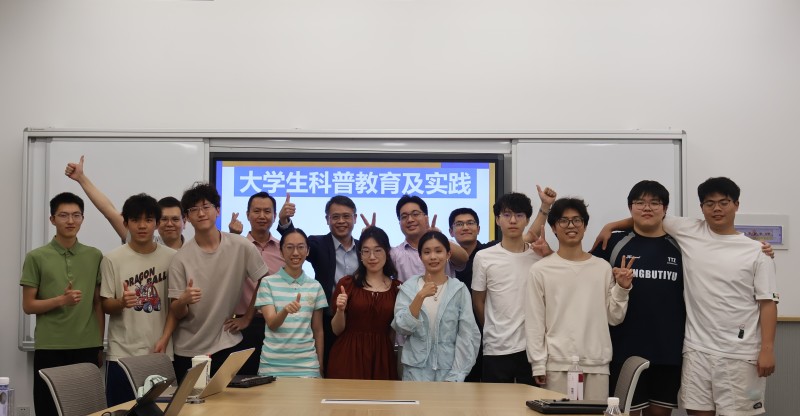
The campus launched its first batch of featured undergraduate teaching reform projects in 2024, approving six initiatives, and will continue to call for new proposals in 2025. With each project's implementation, the quality and visibility of the Campus’s undergraduate education are set to rise.
Article: LUAN Haiyan
Photography:GUO Lingling
Editing:LI Songjiao
Editing in charge: LI Yinan
Reviewer: YANG Yi
Final Review: QU Haidong

